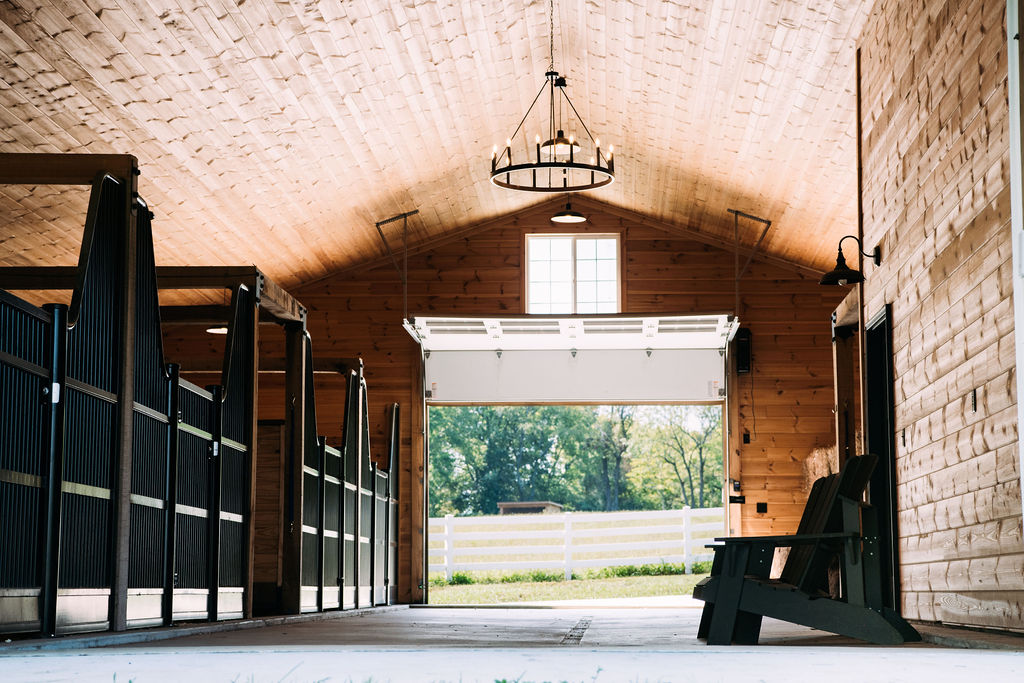Explore essential considerations for designing the layout of your dream horse barn, with practical tips and creative ideas to create the ultimate sanctuary for your equine.
Key Layout Considerations
When perfecting your barn layout, prioritize these essential elements:
- Design a floor plan with adequate stall sizes, aisles, workspaces, and storage areas
- Prioritize natural light and ventilation for horse health and energy efficiency
- Ensure safe and accessible barn features, including non-slip flooring and multiple exits
- Select barn and aisle doors that combine practicality with your preferred aesthetic
- Depending on your barn’s function, consider including amenities like lounge areas, laundry, or wash stalls
Considering Dimensions: Balancing Space and Cost
When planning the construction of a barn, selecting the right dimensions is crucial for creating a functional and cost-effective space. Common dimensions for barns and outbuildings include a wide range of sizes, from smaller structures that may measure 10×20, 12×20, or 16×24, to larger configurations like 40×60, 50×80, or 80×100.
These dimensions can support various functionalities, including living quarters within the barn, a stand-alone living space, or even a lean-to for extra utility. Assessing the overall cost in relation to the desired dimensions is essential as you plan, ensuring your barn and buildings meet both your budgetary constraints and space requirements.
Floor Plans, Storage, and Utilities
Begin by thinking about your floor plan, factoring in stall and aisle dimensions, workspaces and storage areas, and access to water and electricity.
Stall Dimensions: Stall dimensions should be tailored to the size and needs of your horses — a draft horse will have different space requirements from a pony or a mare with a foal. A basic guideline for average horses is 12′ by 12′. Foaling stalls require additional space, often running twice as wide as regular stalls.
Helpful Hint: Hinged partitions are an excellent way to offer both a traditional-size stall and a double-wide foaling stall, depending on the need.
Aisle Planning: Your barn aisle should be wide enough to safely accommodate the passage of horses and handlers and turn a horse around — 12′ is usually considered a minimum comfortable width. If you intend to move through the barn with tractors or other large equipment, plan your aisle width accordingly with room to maneuver. Ensure that the doors at the ends of your aisles are the same width as the aisle and have enough height for equipment you may drive into the barn.
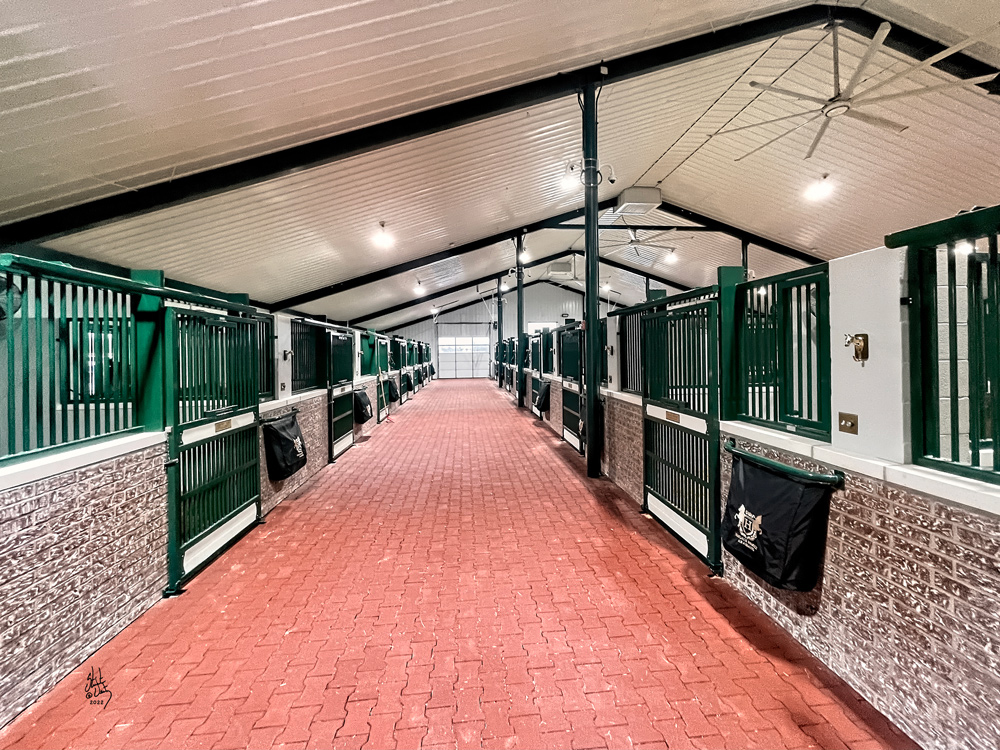
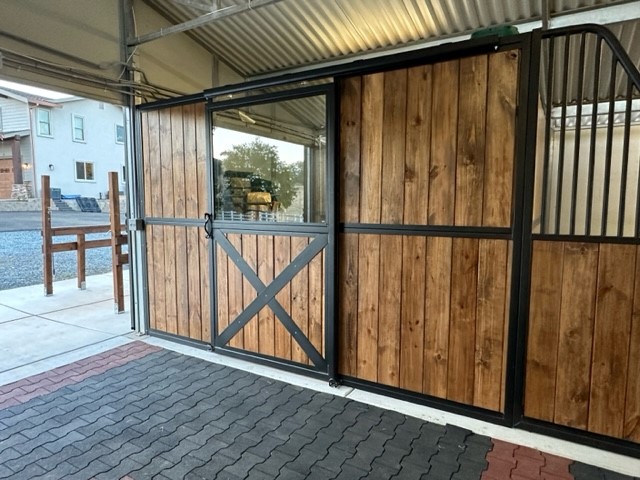
Storage Requirements: Storage space for feed, hay, and bedding is paramount in any facility, with options including feed rooms, feed stalls, lofts, or separate storage sheds. As you plan storage space, consider how hay and bedding will be delivered, and ensure that routes between storage sheds and the main facility are straightforward and accessible in any weather.
Be sure to incorporate flat, well-lit spaces for veterinary and farrier care in your floor plan. Protection from the elements, water and electricity, and easy access for trucks and equipment will be appreciated by your vet and farrier team.
Helpful Hint: Water and electrical access are another consideration as you plan your barn’s layout. Plenty of conveniently placed water spigots and electrical outlets can greatly improve the day-to-day efficiency of your barn.
Health and Safety Considerations
Barn design elements like light, ventilation, accessibility, and flooring choices all impact your horses’ health and safety.
Natural Light Benefits: Prioritizing natural light benefits your horses’ well-being and can make your barn more energy-efficient. Windows, open or windowed doors, and translucent panels can all increase natural light in your barn or can be strategically placed for shade.
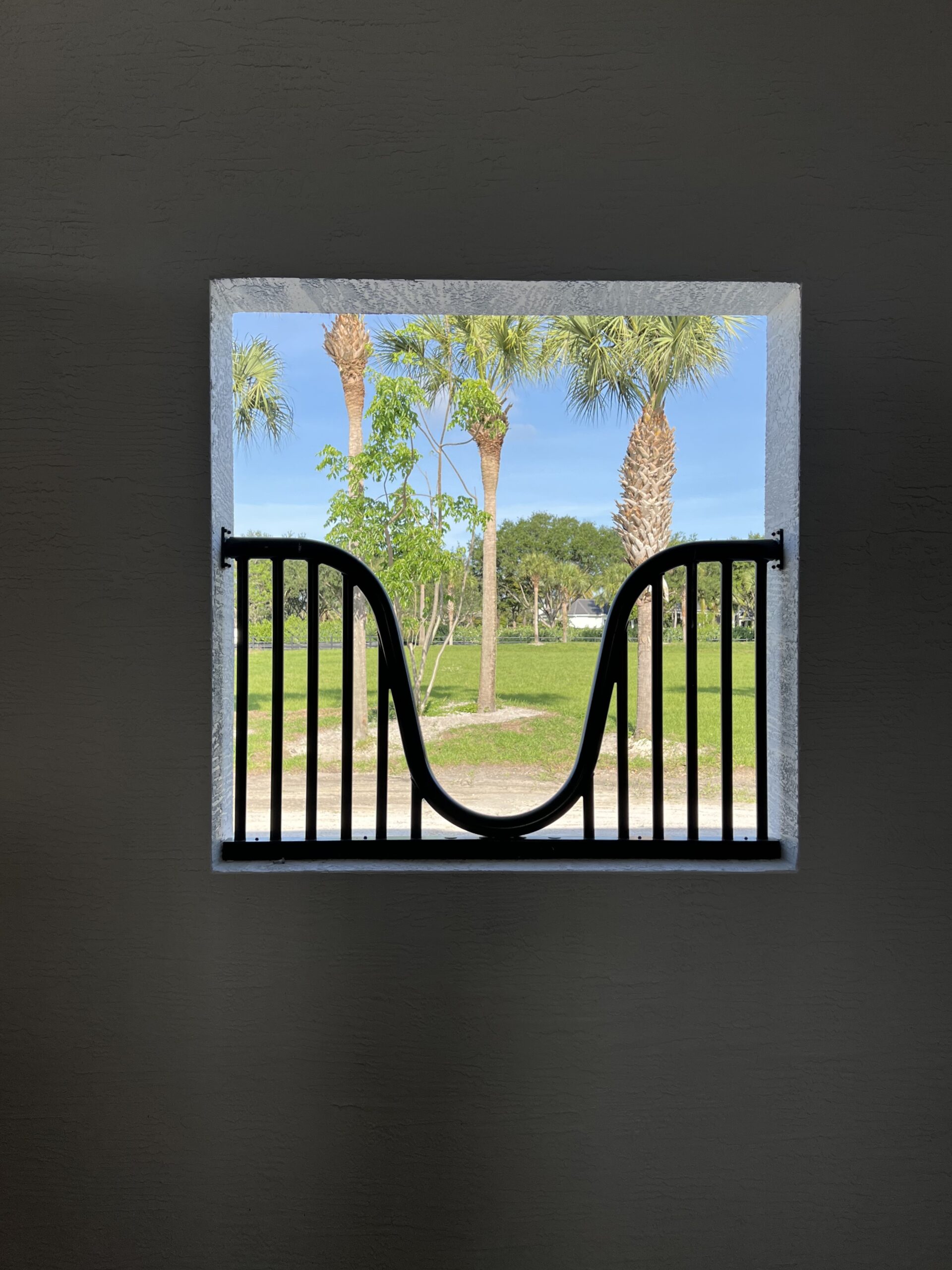
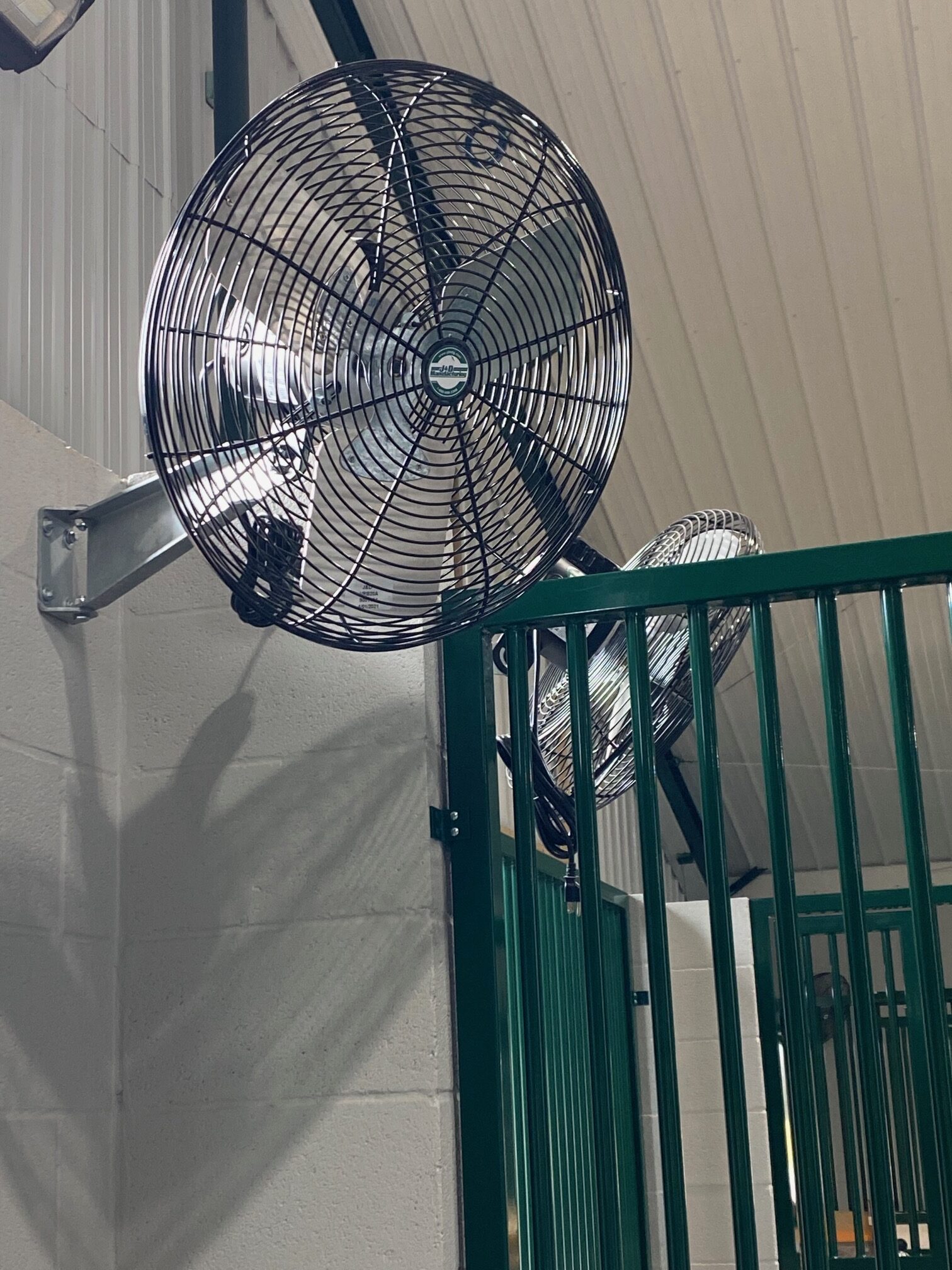
Ventilation Essentials: Excellent ventilation is crucial for equine respiratory health, and you can use ridge and eave vents, windows, and doors to keep your barn well-ventilated.
Safety Features: To optimize your barn’s safety, plan to place exits within 50′ of horses, with multiple doors in larger barns for emergencies. Paddock or Dutch doors to the rear of the stalls also serve as a secondary exit in the event of an emergency. Look for non-slip flooring, like rubber pavers or rubber matting over a base of concrete, cement, packed dirt, or gravel.
Helpful Hint: Once your barn is constructed, fans can be added for additional airflow, which is helpful for condensation prevention and fresh air circulation.
Barn and Aisle Doors
Your barn and aisle doors are an integral part of your facility, and their design should balance durability and aesthetics. These doors leave a lasting visual impression, so they’re a great place to make an aesthetic statement, but they must also be practical for day-to-day use and safe in case of emergencies.
Door Design Options: Barn doors can be designed on sliders or hinges, depending on your facility’s layout and your preferences. Sliding doors are practical and space-efficient, while hinged doors give an elegant and traditional feel to your barn.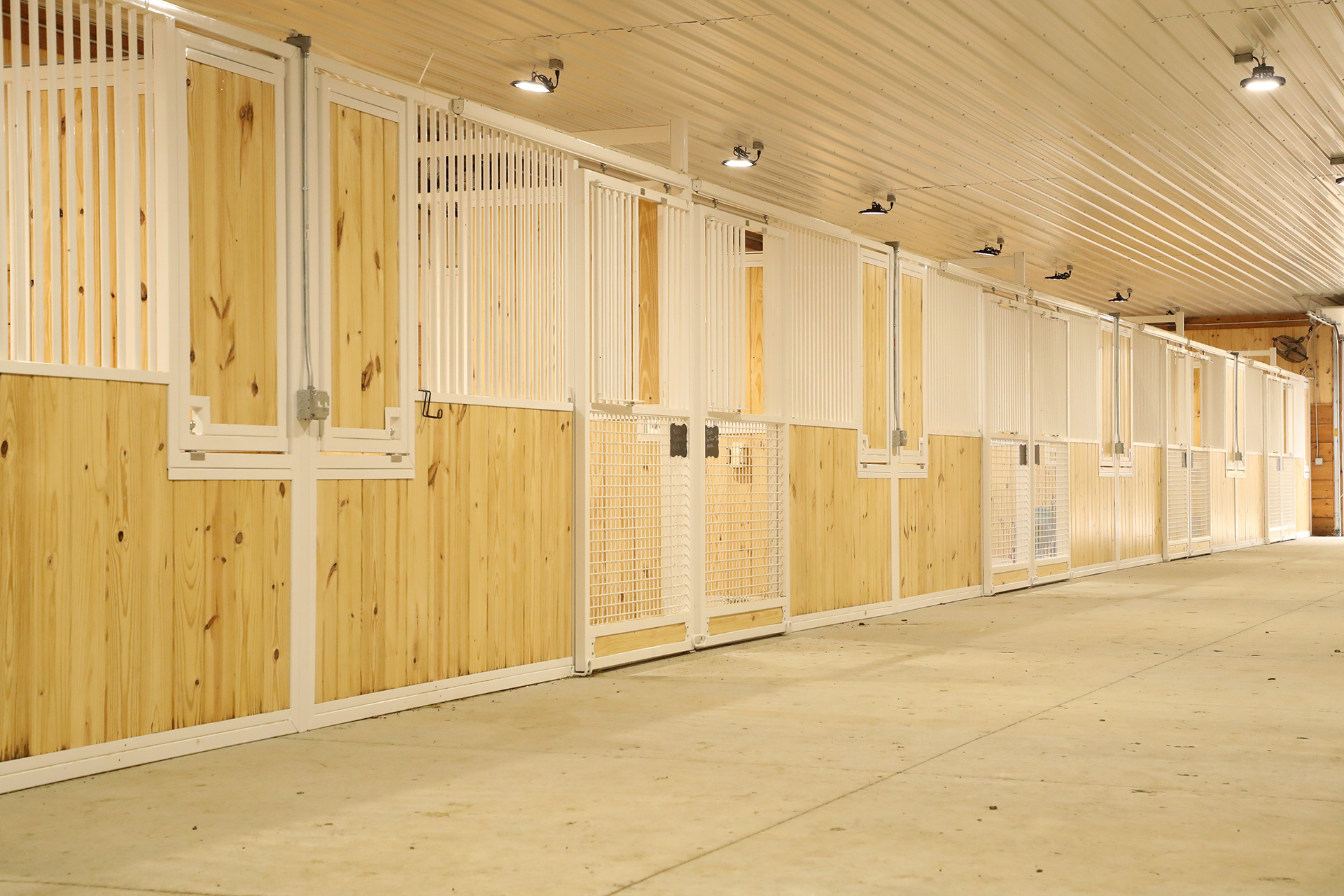
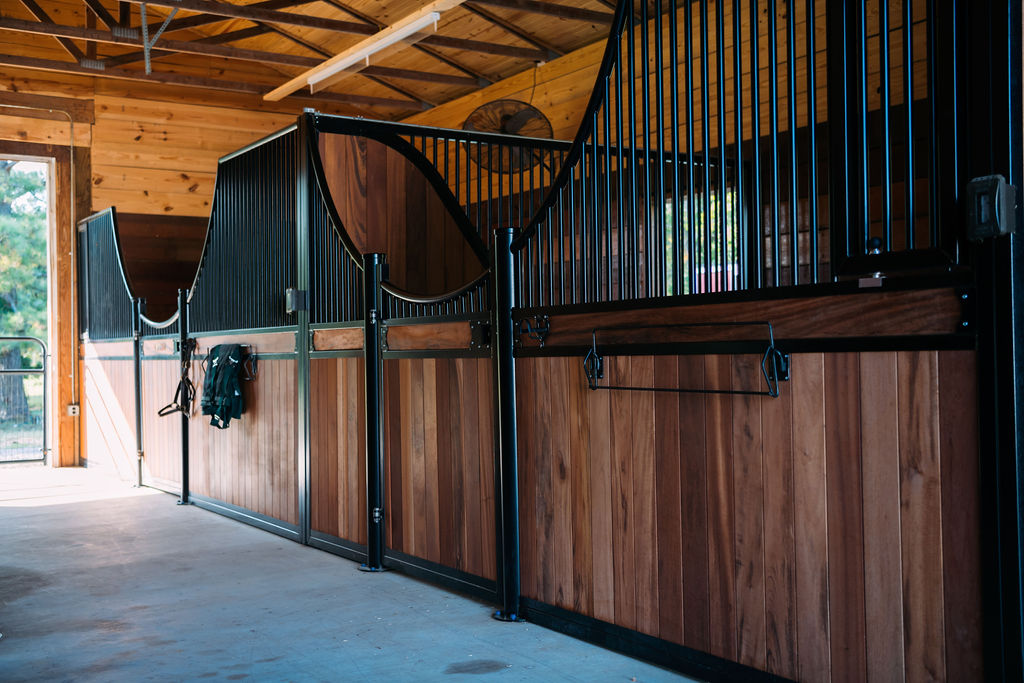
Dutch Door Benefits: You could also consider incorporating Dutch doors into your barn design. While solid doors offer increased privacy and insulation, Dutch doors give you an additional avenue to access your horses, add light, help regulate airflow and temperature within the barn, and provide a secondary escape route in case of emergencies.
Helpful Hint: Creative design details for your barn doors could include adding crossbucks or partial crossbucks, including windows to the top, or attaching a screen or yoke to Dutch doors.
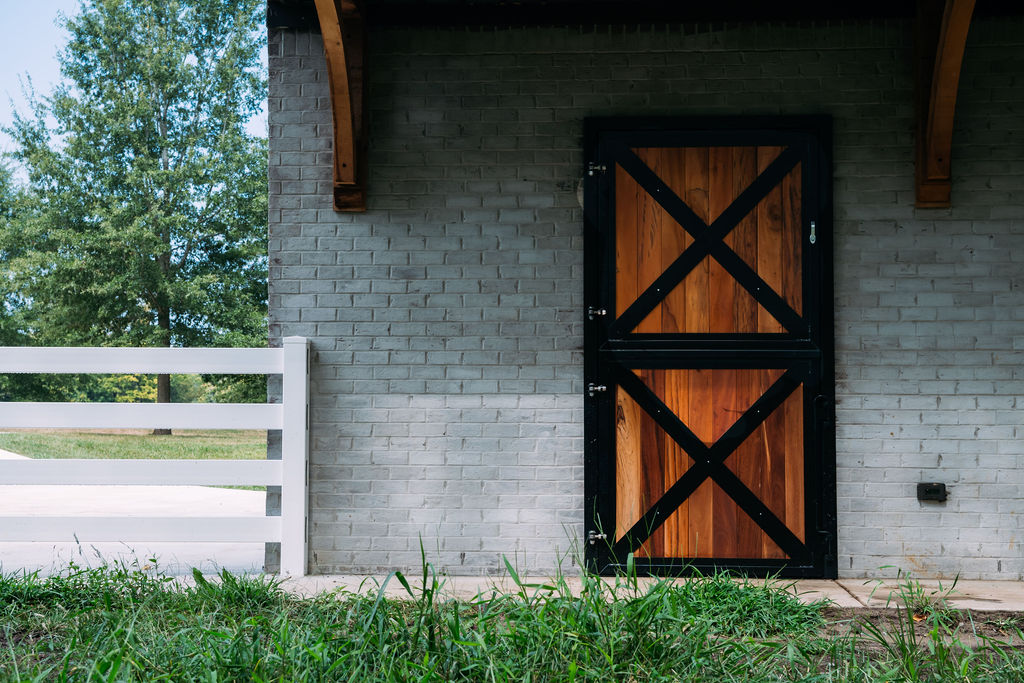
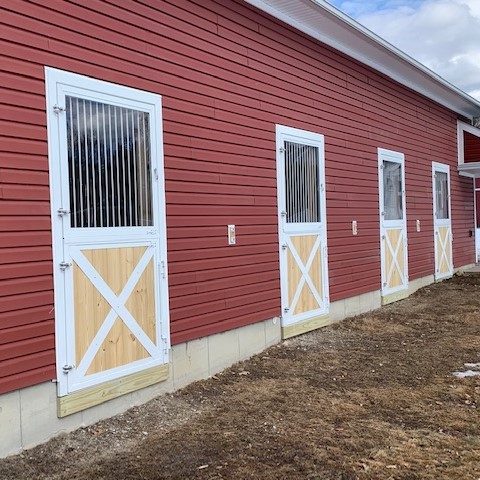
Whatever design you choose, high-quality hardware and materials are essential to ensure your barn and aisle doors stand the test of time, hold up to heavy use, and remain easy to open and close for years to come.
Additional Details and Features
Your facility’s function and purpose will dictate additional design features as you finalize your barn’s layout — a bustling show barn will have different needs than a private breeding facility.
Commercial Facility Features: In busy barns, separate grooming bays and wash stalls can streamline grooming, bathing and clipping and help to keep aisleways clear. A closed-off tack room is useful for organization and cleanliness: consider climate control for leather maintenance, individual storage areas for boarders, and a space to clean tack.
Community Amenities: Larger barns catering to boarders or lesson programs might benefit from rider lounges or common areas, offering spaces for relaxation and community.
Utility Features: A laundry facility with washers and dryer in a designated room or shared space eases the burden of washing horse-related items, and can also include storage for items like blankets and saddle pads.
Professional Layout Design
Sterling Equine Layout Expertise Our experienced design team can help you create efficient, functional barn layouts that maximize both horse comfort and operational efficiency. We consider your specific needs, site conditions, and long-term goals.
